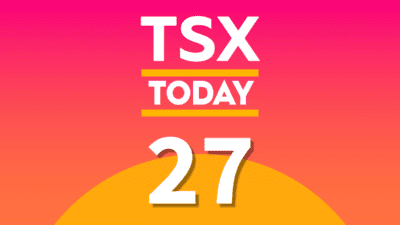When the 2008 market crash struck, North American retailers were perhaps the hardest hit. With strapped margins getting tighter, competition became more fierce. Combine this with the continued growth of American retailers here in Canada, and it was looking rather bleak for investors in the sector. However, a couple of Canadian companies have managed to ride out the trouble and thrive in the rubble.
One of those companies is Dollarama (TSX: DOL), which has managed to develop a real following among bargain-hunting Canadians. While many Canadian companies are doing well, the average Canadian is not. Burdened by record levels of consumer debt and struggling with the realities of nominal wage increases that do not track with the cost of living, larger stores can seem pricey. Thus, stores like Dollarama have stepped in to fill the price gap for Canadians, and investors have lined up as well. The stock price has risen more than 177% during the past three years, far beyond many of its competitors. But how much room for growth is left in the stock?
Conquer Canada, one loonie at a time
Dollarama has grown into a 900-store-strong franchise and plans are in place to add another 70 to 80 locations in 2014. This inches the company closer to its immediate goal of 1,200 stores nationwide.
Several analysts agree that the Canadian market can support up to 500 more Dollarama stores nationwide, which would bring the sector-wide footprint to 2,400 stores. Dollarama expects to have about four or five years left of “good runway” in Canada; this time frame would max out its current expansion plans and may result in the plateau of same-store growth numbers.
So is that the end of the story for investors, or is there another chapter to be written?
Sunny shores await
With a firm grasp of the next five years of the Canadian market in hand, Dollarama has begun to look for the home of its next wave of expansion. Its sights appear to be set on Central America as the next chapter for the company. Back in February 2013 it entered into an agreement to supply both products and expertise to Dollar City of El Salvador. Dollar City currently operates 15 stores in the country and is gauging a regional expansion.
As part of the deal, Dollarama is entitled to handling fees and holds an option to buy out Dollar City. The option becomes active in 2019.
The winds of change are blowing down south
While Dollarama appears to have a stranglehold in terms of market share in Canada, there are some changes coming from the U.S. that could make things very interesting for the company. U.S. retailer Dollar Tree has just announced that it will be buying Family Dollar for $8.5 billion. When the companies are combined, it will emerge as a 13,000-location-strong entity operating in the U.S. and Canada.
With Dollarama now so entrenched in the Canadian retail market, it could have the advantage to withstand its U.S. rival. Dollar Tree so far only operates 189 stores in Canada, but has plans to expand to 1,000 stores.
However, depending on the severity of competition, it could put some pressure on Dollarama’s ability to maintain its target margin rate of 36% to 37%. While the store may be called Dollarama, 62% of the goods it sells are actually priced higher than $1.00. In contrast, Dollar Tree still maintains its $1.25 universal price tag in Canada.







